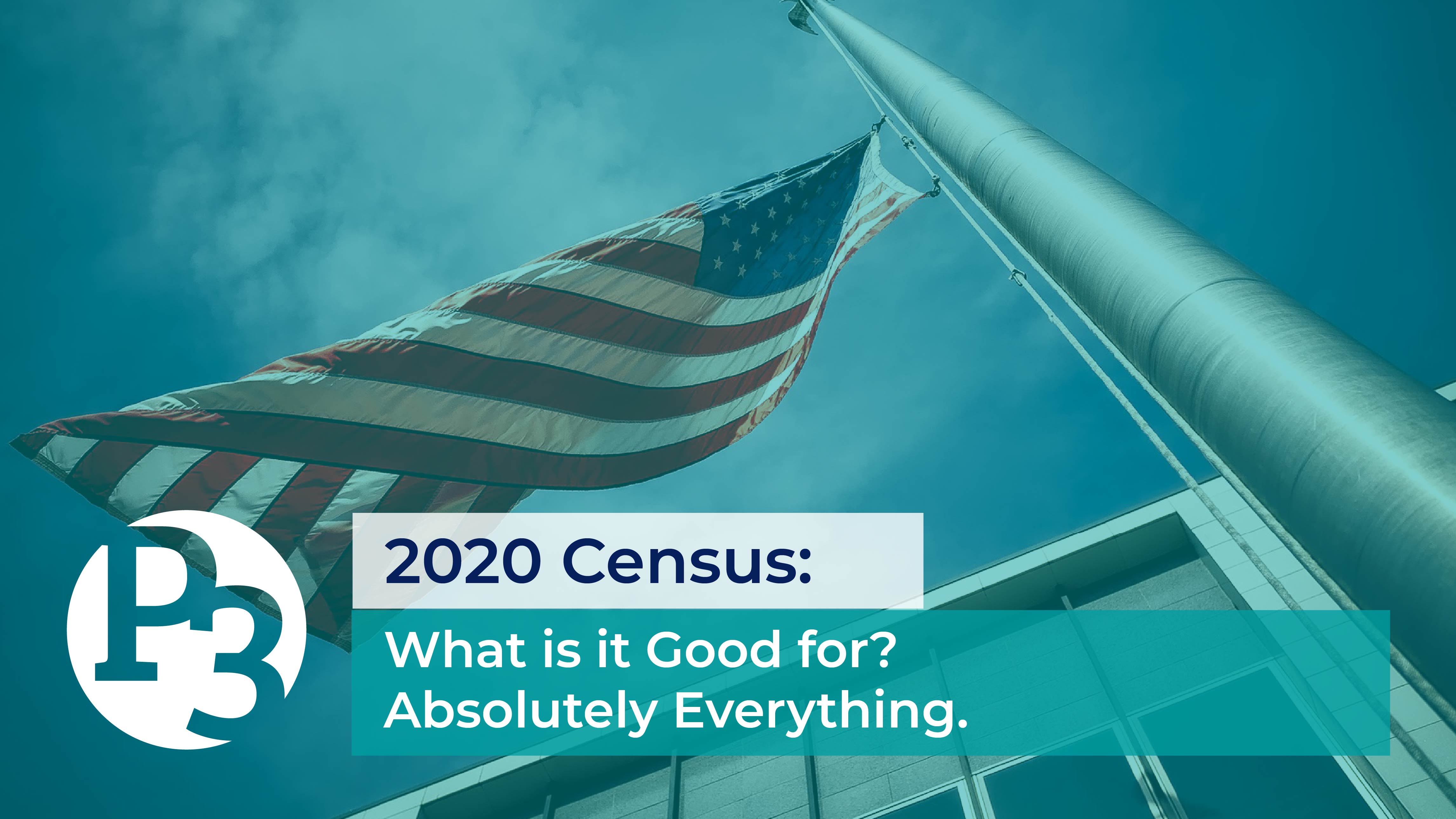
12 Aug 2020 Census: What is it Good for? Absolutely Everything.
The 2020 Census sent its first mailer out to the public around the time the COVID-19 quarantine began. Amidst the pandemic panic and media coverage, we want to help do our part to make sure everyone knows how important this 5-minute survey is to the future of our communities.
We’ve been posting Census links and information on our Facebook, but we thought it might be useful to get a little more in depth.
What is the U.S. Census?
The U.S. Census is a count of all individuals residing in the United States mandated by Article 1, Section 2 of the Constitution. The first Census took place starting in August 1790, and it has since occurred every ten years. Individual responses are confidential and are used to understand the people, places, and economy of different geographic areas.
The Census has a huge impact on the future of our government and country. The data collected through the Census determines:
- The allocation of $675 billion in federal funding for roads, schools, fire departments, hospitals, and other resources
- The number of seats each state receives in the House of Representatives
- Congressional and state legislative districts
The Census can be completed by phone or by mail, and for the first time in 2020, it can also be completed online!
Check out this video from the U.S. Census Bureau that explains more about the 2020 Census:
How P3 Uses Census Bureau Data
At P3, we use Census data and data that the U.S. Census Bureau collects (such as the American Community Survey data) to guide our approach to every project. At the start of each project, we analyze the demographics of the project’s study area using U.S. Census Bureau data to determine who lives in areas that will be impacted by the project.
Demographic data can be instrumental in guiding engagement and ensuring that a project’s public involvement process is successful and equitable. Here’s how we use demographic information to tailor our public engagement approach.
1. To provide language translation and interpretation services.
We want to make sure that every person who receives a flyer or attends our virtual or in-person meetings understands the content presented. By looking at language demographic data, we can determine if language translation or interpretation services are needed. If there are a high number of non-English speakers in an area, we can make sure to send out notices in both English and other identified languages with a note about the availability of an interpreter at the meetings.
2. To reach hard-to-reach populations.
Some people are harder to reach than others when it comes to public engagement, and the barriers to engagement are not always apparent. However, some demographic characteristics can hint at methods that can be effective in reaching those hard-to-reach individuals. For instance, if an area has a high number of senior citizens, providing paper surveys to senior communities or posting flyers in local meeting places may boost engagement.
3. To evaluate the equity of engagement efforts.
We at P3 are always working toward equitable outreach and engagement. The first step to achieving this is understanding who we’re trying to reach. During comment periods for a survey, we compare the study area’s demographics to those who are responding. We then ask ourselves: whose voices are missing? This helps us to determine what specialized outreach we should implement to receive more representative participation during the rest of the time the survey is open.
Equity analysis doesn’t stop there: once the comment period or phase of the project is over, we take the time to compare again. This analysis helps us recognize missing voices and allows for preparation of future efforts to make sure that in the next phase of the project engagement is even more representative.
Why These Things Are Important
The projects we’re working on impact communities and the people living in them. Without an accurate measure of who lives in a community, we can’t know whose perspectives are missing from the conversation. Those missing perspectives are as valid and valuable as any other, and it’s crucial to ensure that they have a place in the decisions impacting their community.
The 2020 Census and the U.S. Census Bureau data help us understand the communities we’re working in so that we can tailor our approach to reach everyone who’s impacted and/or interested. But we’re just one small piece of the puzzle. Municipal offices, government officials, the federal government, and more use this data to make decisions for our collective future. To make sure this is accurate, we all have to do our part in completing the 2020 Census.
The U.S. Census Bureau extended the deadline for responses due to COVID-19, but has since moved up the deadline. You now have until September 30, 2020 to complete the census survey online, by phone, or by mail.
Have you completed the 2020 Census yet? If not, it’s not too late to hop over to their website to complete the survey!
About the author: Deirdre Scanlon is the Communications Engagement Specialist for Public Participation Partners (P3). When not dreaming up new ways to equitably engage the public, you can find Deirdre tending to her houseplants or walking the trails of Raleigh, NC.


Sorry, the comment form is closed at this time.